Recently there have been a couple of snitty pieces by uninformed trade hacks about the viability of standalone men’s fashion weeks, attacking both London and New York specifically. As some brands have temporarily decided to show their men’s collections during women’s fashion weeks (saving money in the process, but inevitably lessening the power of their menswear), so all the men’s weeks have had to change in order to cope with this. London has become a platform for the young and the vital, while New York is focusing more on commerciality.
From the heady days of Studio 54 and the style abandon of its young and beautiful devotees, all the way through to the Nineties domination of the big four (Ralph Lauren, Tommy Hilfiger, Calvin Klein and Perry Ellis), New York has not only helped shape the global style vernacular over the past 70 years, but it’s also been responsible for many of fashion history’s most important moments. More recently, New York’s seasonal fashion weeks have played a vital role on the world stage, showcasing clothes from designers who help define what much of the middle classes with money to burn choose to wear. A bubbling stew of red, white and blue commercialism and wholly accessible creativity, in 2016 the American clothing industry was valued at $292 billion, accounting for almost ten per cent of the global fashion industry’s $3 trillion worth. Stands to reason, then, that for America not to have its own men’s platform from which to present its wares to the world, would be a sorry (not to mention fiscally irresponsible) state of affairs.
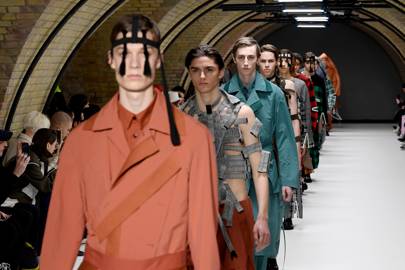
Shutterstock
London, meanwhile, continues to produce some of the best menswear designers the industry has ever seen. The talent here is quite extraordinary.
And it deserves a serious platform.
When these trade journalists criticise the men’s week in London, they do so, unfortunately, from a position of ignorance, misunderstanding the very nature of these events. One of the things they fail to understand is that if we closed men’s week (I am chairman of London Fashion Week Men’s and sit on the board of the British Fashion Council), then most of the participating brands would receive no publicity at all, and because of the crowded schedule of London Fashion Week – which is obviously full of womenswear designers – would probably be pushed off the schedule completely. Maybe this is what these journalists would like, but it would deny these young designers a platform from which to show their clothes. There would be no oxygen of publicity. It would also make it difficult for visiting journalists and buyers to attend the shows, seeing that their travel schedule is already crowded, onerous and expensive.
What they also fail to understand is that if the week collapses, then so does the financial sponsorship, taking all the vast amount of ancillary support with it: infrastructure, show venues, show support, publicity, buyer and journalist outreach, international buyer and journalist outreach (including flights, hotels and cars), support from local government, individual mentoring, business support and – when needed – financial support.
It’s easy to criticise something if you don’t actually know how it works.
At the BFC we have for some time now tested the water regarding the dates of all our fashion weeks (the two London fashion weeks for women, and the two for men), and while we have not yet reached a decision most menswear designers it seems, based on the findings so far, would prefer to stay where they are. This may change, of course, but not for the foreseeable future.
I write this as I leave for the Paris men’s week, which has an extremely busy and exciting schedule dominated by many of the big luxury players. Paris seems the one constant in the ever-changing nature of fashion weeks, the grand old dame of fashion. Yes, it is glamorous, and yes it still dominates in many respects, particularly with womenswear. But like all fashion centres, it has its problems and its critics, being seen as old-fashioned, intractable and still rather bourgeois. But it will always be important, in the same way that Milan, New York, London and Florence (which hosts the successful Pitti trade shows) will always be important. What should never be forgotten or undermined is a city’s DNA – and London’s DNA will always be creativity. New York is all about the commercial and the branded; Milan will always have the big family-run businesses; Paris is old-school luxury. And London is all about creativity, always has been, always will be. London is one of the most culturally rich cities on the planet, with world-class institutions and globally renowned talent and London Fashion Week Men’s pays homage to the ever-expanding creativity of our capital by bringing together the most talented individuals and innovative brands in the fashion industry.
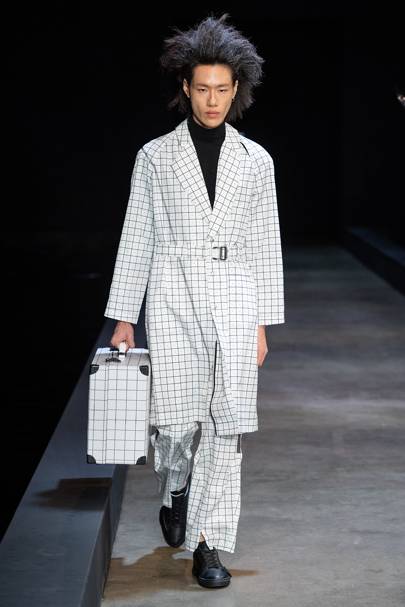
Last week, London hosted the 13th edition of London Fashion Week Men’s, in a new space at the Truman Brewery in Brick Lane, the heart of the city’s vibrant, intoxicating East End, an area of town that in some respects is almost unrecognisable from what it was ten or 15 years ago. Its ability to regenerate and reimagine itself has made it one of the most visited and fetishised areas of any city in the world and it is a perfect place to celebrate what is already being talked about as the most gifted generation of young menswear designers this country has ever seen. Just read this list aloud – deep breath – and then ask yourself if you’ve ever felt that British menswear was as exciting as it is right now: Craig Green, Charles Jeffrey, Cottweiler, Art School, A-Cold-Wall*, Bobby Abley, John Lawrence Sullivan, Grace Wales Bonner, Nicholas Daley, Kiko Kostadinov, Liam Hodges, Per Götesson, Phoebe English, Bianca Saunders, Paria Farzaneh, Alex Mullins, etc. These designers, ably abetted by the more established brands, such as E Tautz, Christopher Raeburn, Astrid Andersen, Iceberg, Kent & Curwen, Barbour, Belstaff, Oliver Spencer, Lou Dalton, Chalayan and Michiko Koshino, prove yet again that London has a deep pool of design talent, one that is constantly being replenished. It’s always invidious to single people out, but the strength of London's men’s schedule is the fact that as soon as one designer drops out – moving into the women’s schedule, abroad, perhaps, or even out of season – they are immediately replaced by yet another dynamic young whizz-kid, many of whom come via Newgen or Fashion East, and usually encouraged and assisted by the great magician of London menswear, Lulu Kennedy. This season we continued our celebration of discovery and the creative diversity that has made London the international hub for menswear; the schedule represents more than 50 designer businesses, while our international guests travelled from more than 45 countries.

From British heritage to emerging labels and vibrant streetwear brands, London Fashion Week Men’s looks at the zeitgeist, merging the landscapes of technology, fashion, art and performance. The schedule has been packed full of catwalk shows, experiential activations, popup shops and performances from alternative hip hop to classic tailoring, alongside collections from international design houses and award-winning British designers.
For the last two seasons, London has been helped in its quest to fly the flag for its young designers by the talismanic presence of the British Fashion Council’s ambassadorial president, David Beckham, someone who does more for British menswear than some of our homegrown fashion journalists. “I have long been passionate about British style, fashion and craftsmanship and this role gives me the chance to get under the skin of an industry I love,” he says. “I am excited to be working closely with the British Fashion Council to promote and inspire young talent, from across the UK, on a global scale. The fashion industry is one of our best performing global exports.”
And the industry we refer to is one of enormous impact to our economy, the British Fashion Industry continues to outstrip the national average growth figure and directly contributes £32bn to UK GDP and employs 890,000 people, with the menswear market accounting for 26 per cent of the total and menswear sales outperforming womenswear.
For what seemed like years, the menswear element of London Fashion Week was always tacked on to the end of the women’s shows, almost as an afterthought. But there had increasingly been so much interest from designers wanting to show, and so much interest from the press and consumers alike, that in 2011 it was decided by the British Fashion Council to create our own men’s fashion week and to move it to a more relevant time in the calendar. After all, by the time of the men’s day at the end of LFW, all the important press and buyers had disappeared to Milan in order to see the Gucci show and – far more importantly – the day was in completely the wrong part of the season.
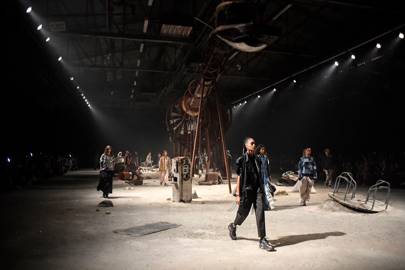
Shutterstock
Which is why we moved it so that our men’s fashion week preceded Florence, Milan, Paris and New York. The British Fashion Council asked me to chair the initiative and so, along with the BFC’s CEO Caroline Rush, I spent six months not just espousing the idea, but trying to encourage those British designers who had previously decided to move abroad – Burberry, Alexander McQueen, Paul Smith, Vivienne Westwood etc – to move back and show in London.
We knew that in order to encourage all the hundreds of press and buyers to put another three days in their diary and come to London, we had to make the experience fun. We wanted them to wake up in Milan (the fashion week that immediately follows ours) with the mother of collective hangovers. We wanted them all to tell anyone who would listen: “You know what? I went to London and I had a seriously great time.”
Our pitch was simple: come and show your clothes in the coolest capital in the world; come and show your wares in the city with the best restaurants, the best museums, the best art galleries, public spaces, parks, hotels and cocktail bars.
Come to where the action is.
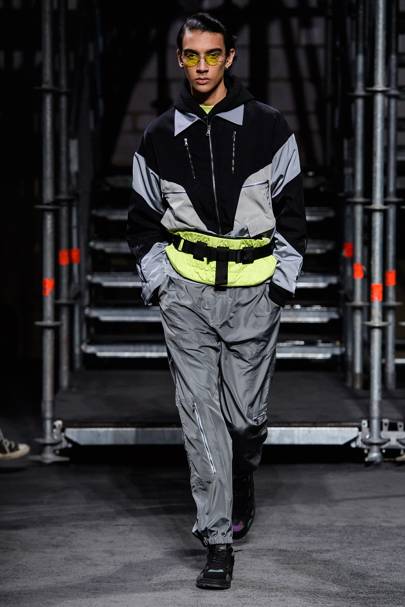
We were also aware of needing to celebrate our wonderful city. These days, London is less a metropolis and more of a lifestyle choice, a place from which to launch yourself into the world or a place to land, having investigated everywhere else (and obviously found them wanting). The latest iteration of Swinging London is a wonder, with a multitude of reinvigorated urban villages, new art galleries and more a-star restaurants per square mile than any other city in the world. So in a way, London Collections Men (which is what we called it before rebranding as London Fashion Week Men’s) became as much of an advertisement for London as it is for our burgeoning (as well as established) menswear talent.
So we asked Prince Charles to officially launch it for us and convinced Sir Elton John and David Furnish to throw open their home for a dinner and a showcase by the hot new band, The Strypes. We asked magazines and newspapers to get involved and have parties (the project wasn’t going to work unless it was inclusive and everyone felt as though they could take ownership of it) and we asked celebrities to become ambassadors, encouraging them to spread the message on television and radio (our ambassadors initially included the hip hop star Tinie Tempah, broadcaster Nick Grimshaw, model David Gandy and TV behemoth Dermot O’Leary – they were soon joined by Formula One racing champion Lewis Hamilton, Chinese supermodel Hu Bing and film producer and philanthropist David Furnish himself).
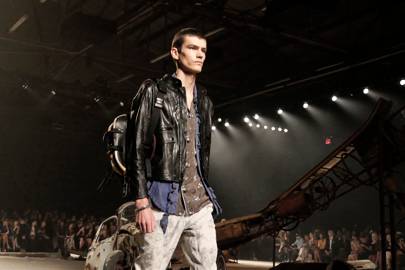
Shutterstock
After a few seasons, the mayor’s office began to see the commercial possibilities of the initiative, especially in terms of attracting visitors to London. In his capacity as the mayor of London, Boris Johnson stepped up to the plate, as did the mayor’s head of cultural policy, Justine Simons, encouraging us to work with UKTI, Visit Britain, the Museum Of London, The V&A and even the Great campaign to build various cultural and retail programmes. Commercially, London soon saw the benefit of increased revenue for ancillary services, such as hairdressers, models, make-up artists, production companies, digital providers, hotels, taxis, restaurants, PR agencies and media.
The total global media value generated by London Collections: Men in its second season exceeded £40 million, which is no small beer, even for a week that was largely driven by Champagne. We have also had a few surprises. One of the things we had not anticipated was the overseas interest in heritage, which is something we tend to ignore in this country. The press and buyers from Asia and the Americas were especially keen to attend our Savile Row events and loved being able to visit St James’s Palace, Jermyn Street, Spencer House, St Paul’s, Lord’s Cricket Ground and all the other cathedrals of tradition where we held events. We also held various parties in Downing Street.
Predictably, the other fashion capitals were not exactly thrilled by what we were attempting to do. Some of the senior figures at our rival organisations went public with their disdain for the idea. Some made a great point of ignoring us, while others lobbied hard behind our backs, trying to convince their designers to stay put. However, one of the great byproducts of setting up a men’s fashion week in London is the fact that we managed to attract international fashion designers from everywhere from New York, Beijing and Paris to Milan, Copenhagen and Hong Kong. So far we have hosted Tom Ford, Tommy Hilfiger, Dolce & Gabbana, DSquared2, Tiger Of Sweden, Iceberg, Giorgio Armani and Rag & Bone, to name only a few, as well as dozens of new brands from Asia.
London Fashion Week Men’s came about because we felt that menswear was suddenly becoming more interesting than womenswear, because for the first time in an age, British menswear felt as though it had the Big Mo, felt as though it had some serious traction.
There are now more commercially minded, critically acclaimed young menswear designers than ever before. Unlike the menswear designers I grew up with in the Eighties, and who filled the pages of style magazines such as i-D, The Face and Blitz, this new generation understands that in order to compete on a global stage you need a properly commercial business, not just a bunch of press cuttings from trendy Japanese magazines.
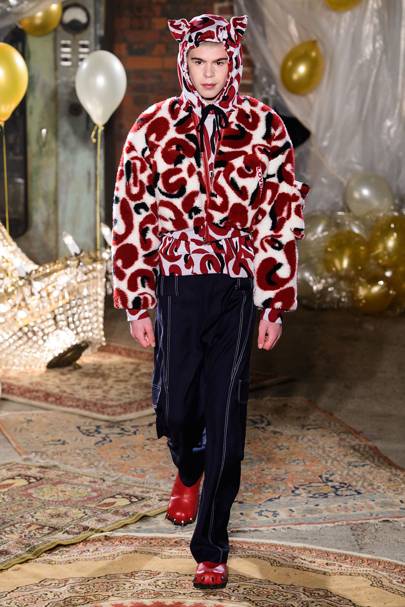
During the last few seasons, London Fashion Week Men’s has mutated once again, becoming even more of a showcase for young designers. Whereas a few years ago it was all about amplifying big British brands and Savile Row tailors, recently it has become – once again – a platform for the young and the ingenious.
London has obviously been a centre of subcultural excellence since the early Sixties, when the likes of David Bailey, Michael Caine and Mary Quant redefined the city as a template for the future. Since then, every decade, usually around the mid-point, London has risen up again: punk, club culture, Britpop, you name it, London has been the centre of it.
And menswear has always been at the heart of this cultural rebellion. Not only do we have the greatest tailors in the world in Savile Row, not only do we have the best youth culture and street style in the world (we invented everything from the teddy boy to the punk), we also have some of the world’s most high-profile fashion designers.
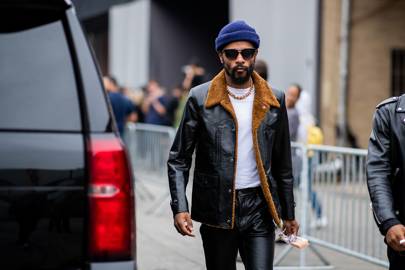
Getty Images
The future potential of menswear is exponential. There is a feeling even among those who stand to lose the most by such an admission that womenswear has almost reached a state of saturation and that while the fashion industry continues to spread around the globe, it is in menswear where the real innovation is happening. The men’s market has traditionally been a lot smaller than the women’s market, but as the women’s business slows, so the men’s business expands. This, of course, has been due to one thing and one thing only: consumer demand. Men these days expect great clothes at every price level, be that high street, mid-market, designer, luxury or bespoke. They expect quality at any price and so far the market appears to be delivering it. The current generation of male consumers might be more sophisticated than previous generations, and they might not shop more like women, but because of that they no longer have any qualms about buying into the idea of “fashion”. Men these days treat clothes almost as a fait accompli. There is no stigma attached to them, nothing secret.
And London is at the centre of it all. It is sad that a couple of mealy mouthed journalists try to undermine the hard work of the British Fashion Council, who work tirelessly on behalf of British fashion designers (with many people affiliated to the organisation obviously working on a pro bono basis) and who go out of their way to draw as much attention to the city as possible.
Shame on you.
Now read:
The biggest Autumn/Winter 2019 trends for men
Best street style from London Fashion Week Men's AW19
GQ Fashion Week Dinner co-hosted by David Beckham: all the pictures
https://www.gq-magazine.co.uk/article/imortance-of-london-fashion-week-mens
No comments:
Post a Comment